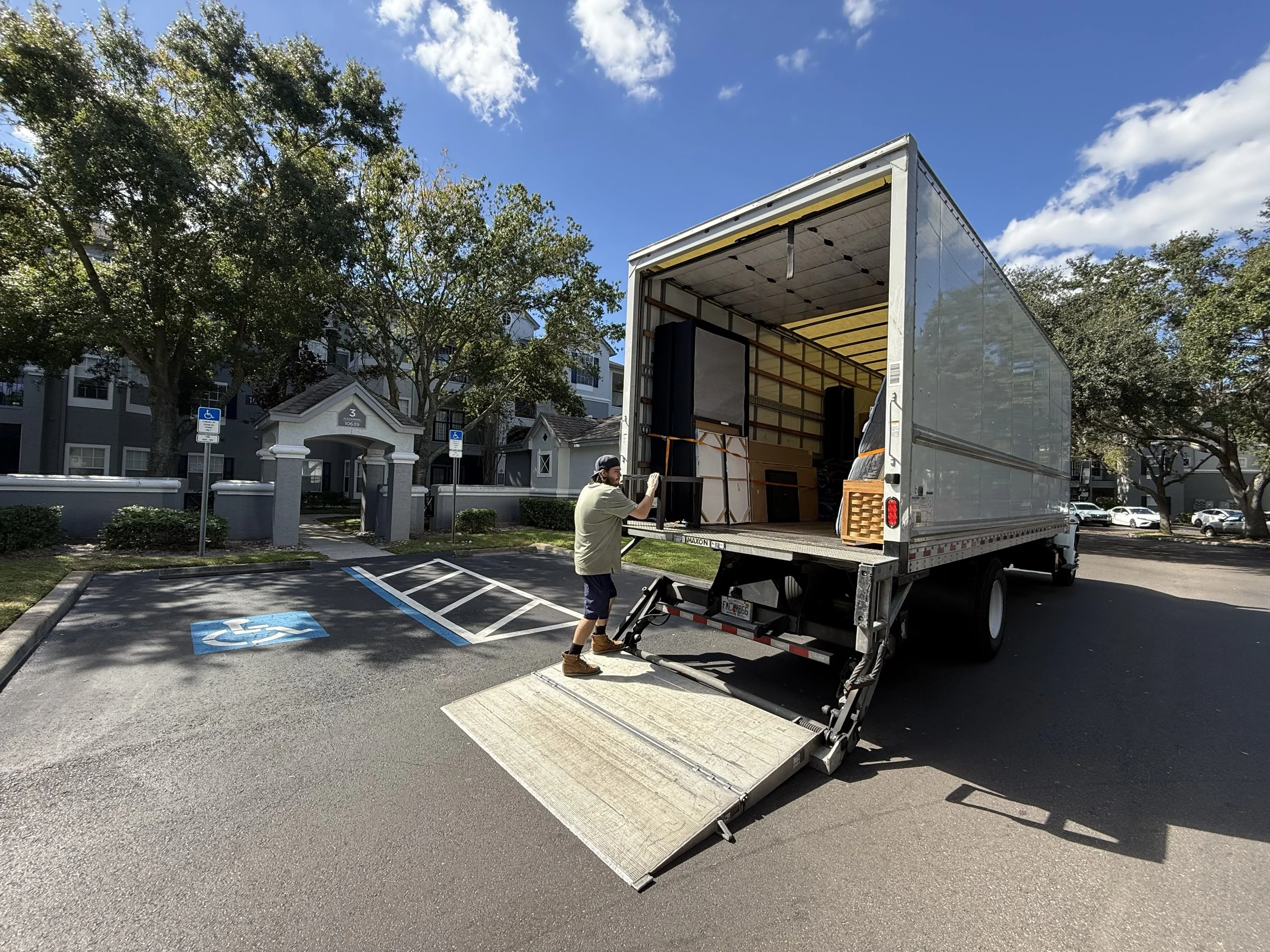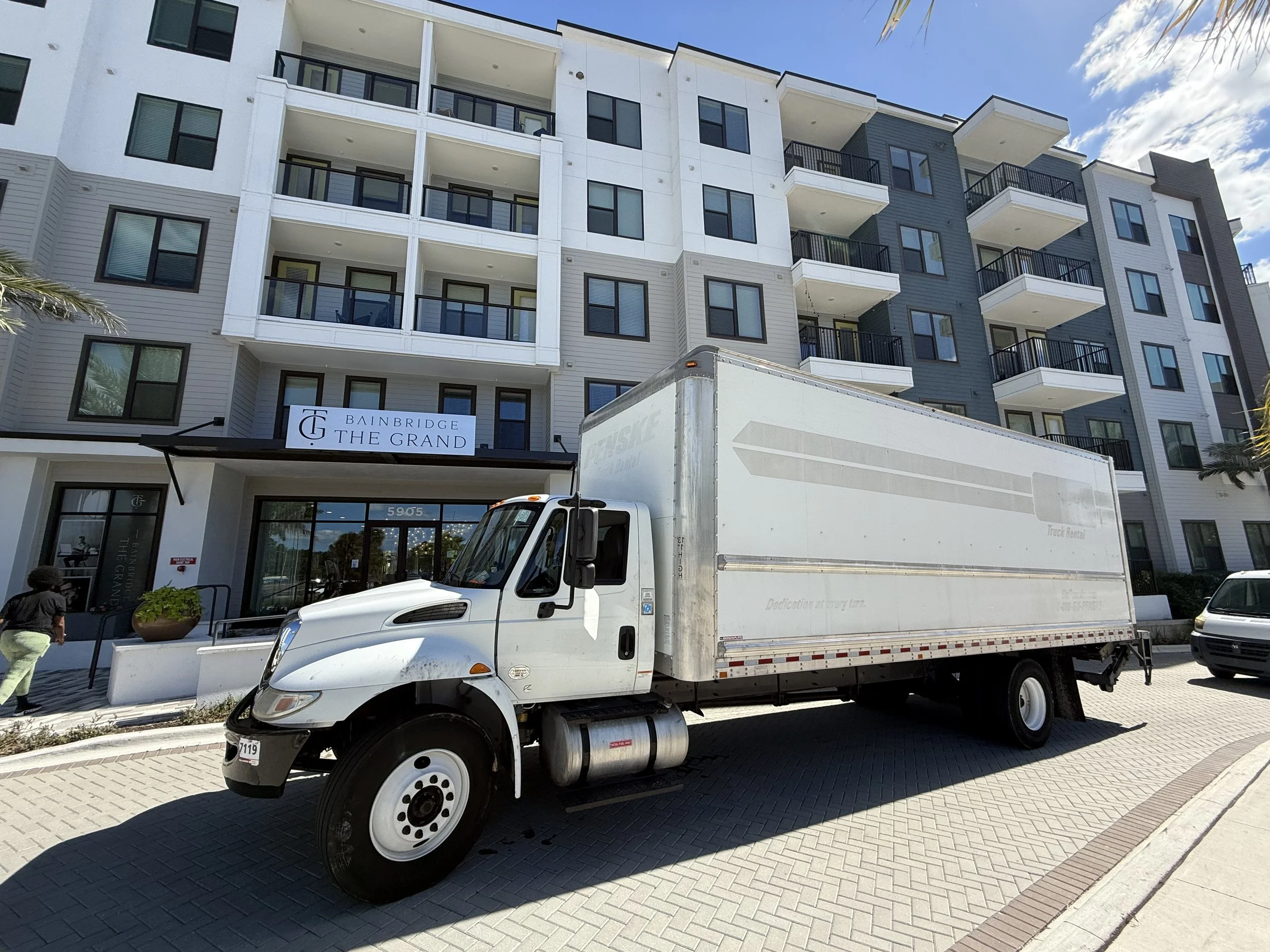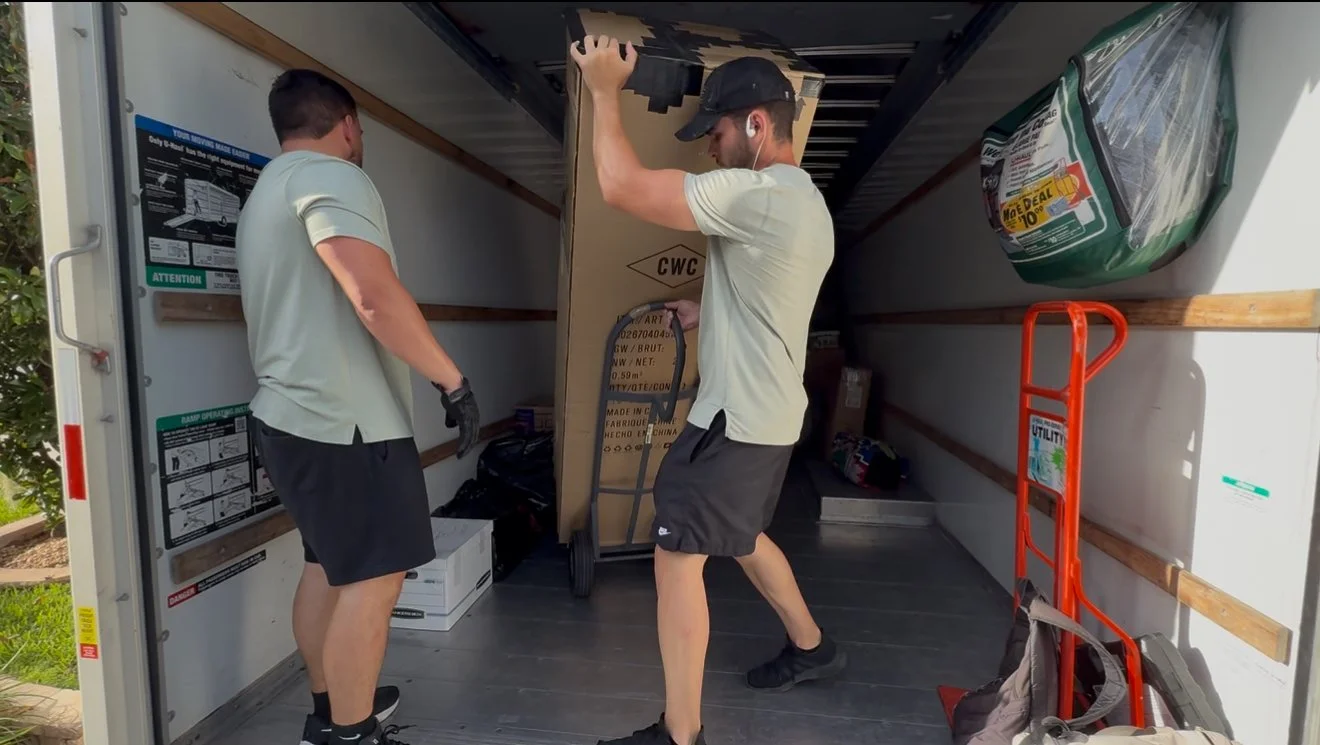How to Find Budget-Friendly Moving Services in orlando
Affordable Movers: How to Find Budget-Friendly Moving Services and Save on Relocation
Moving affordably means choosing the right mix of service level, timing, and preparation so you pay for value instead of surprises. This guide explains what "affordable movers" means, why balancing cost and reliability matters, and how specific service choices—from labor-only crews to container rentals—change line-item expenses. Readers will learn typical 2025 cost ranges for local and long-distance moves, which affordable solutions fit different move profiles, how to vet budget movers safely, and practical saving tactics that reduce total spend without sacrificing protection. The article maps the process step-by-step: cost breakdowns and a cost-component table, service-type comparisons with pros and cons, a vetted-quote checklist, tactical cost-saving strategies, how to use calculators to budget, plus discounts and negotiation scripts. Throughout, semantic relationships like hourly rate → affects → total labor cost and service type → determines → convenience vs. price will clarify decisions so you can plan a realistic, low-cost relocation.
What Are the Typical Costs of Affordable Moving Services?
Affordable moving services commonly display cost ranges driven by three primary factors: distance, volume, and service level. For quick snippet-style clarity: local budget moves often run on an hourly-per-mover model with typical hourly rates and minimums, while long-distance budget moves are priced by weight/volume and mileage with national averages that vary by household size. Understanding these core drivers helps you compare quotes apples-to-apples and prioritize savings where they matter most.
Below is a compact table breaking costs into labor, truck/mileage, supplies, insurance, and extra-services so you can see how each component contributes to the final price and where budget choices pay off.
Introductory table: cost components for local vs. long-distance moves.
| Move Type | Cost Component | Typical Range / Example |
|---|---|---|
| Local (hourly) | Labor (per mover) | $35–$65 per hour per mover; typical 2–3 hours |
| Local (flat) | Truck rental / fee | $50–$150 base + mileage/fuel depending on truck size |
| Long-distance | Linehaul / mileage | $0.50–$1.00 per mile depending on weight and carrier |
| Long-distance | Shipment weight/volume | Small 1BR: $2,500–$5,000; 3BR+: $6,000–$12,000 (national averages) |
This table shows that labor and distance are the dominant cost drivers, and that selecting an hourly local crew versus a flat-rate trucking option shifts where you can reduce expenses. With that cost framework in mind, the next subsections break local and long-distance pricing into actionable examples and reduction tactics.
How Much Do Local Movers Charge for Budget-Friendly Moves?
Local affordable movers typically charge hourly rates per mover plus a truck fee, with a minimum number of hours required to cover the crew’s basic costs. Hourly rates commonly fall within a mid-range that balances affordability and reliable staffing, and minimums often range from two to three hours depending on market conditions and company policies. For example, a typical small move might use two movers for three hours at $45 per hour per mover, producing a labor subtotal of $270 before truck and supplies—so accurate inventory and pre-packing can reduce billed hours significantly. Understanding hourly-per-mover pricing helps you negotiate realistic minimums and choose strategies, like self-packing or staging, that lower the total hourly commitment for the crew.
Accurate sample calculation is useful: two movers × three hours × $45/hr = $270 labor; add truck fee $75 and supplies $25 to estimate approximately $370 for a studio or small 1-bedroom local move. This concrete example demonstrates why reducing on-site time and streamlining load/unload processes are the most effective levers for lowering hourly local move costs. Next, long-distance moves use different pricing models and require a different cost-focus that we address below.
What Are Average Long Distance Moving Costs in 2025?
Long-distance affordable moves are driven primarily by shipment weight/volume and total miles traveled; recent averages show a wide range because household size and service level vary considerably. For many national carriers and broker estimates in 2025, a typical long-distance move around 1,000 miles for a small household can be in the low thousands, while larger households or full-service options push totals higher; these averages reflect a combination of linehaul, fuel surcharges, and terminal handling. Container and van-based options change how charges are apportioned: container rentals commonly bill by container size and monthly fee, while traditional movers bill by weight plus mileage and sometimes provide binding or non-binding estimates.
Because long-distance pricing can vary, use volume-reduction tactics and tight inventory control to lower the billed weight/volume; also consider hybrid approaches, such as self-loading a container for transport rather than paying for full-service loading, to reduce labor line items and preserve value. The next section compares the main service types so you can select the affordable solution that matches your move profile.
Which Types of Affordable Moving Solutions Can Save You Money?
Affordable moving solutions fall into several hyponym categories—full-service, labor-only, truck rental, and container rental—each with different cost components and value tradeoffs. Full-service moves bundle labor, truck, and packing but cost more upfront; labor-only services cut packing and driving costs but require more DIY effort; truck rental shifts responsibility to you and typically reduces price for small moves but adds fuel and mileage exposure; container rentals provide a middle ground with predictable monthly fees but potential storage charges. Choosing the right approach requires matching service type to move complexity, distance, and time constraints.
Below is a comparison table that summarizes when to use each affordable approach and the main cost impacts to help you pick the best value for your scenario.
| Solution Type | When to Use | Pros / Cons + Cost Impact |
|---|---|---|
|
Full-service movers |
Large households, tight timelines, long-distance | Pros: convenience, liability coverage; Cons: higher total cost; cost impact: higher labor + packing line items |
|
Labor-only services |
Local moves or partial help needs | Pros: lower cost for heavy lifting; Cons: you handle packing/drive; cost impact: lower labor-only fees, no truck fee from crew |
|
Truck rental |
Budget local moves with DIY capability | Pros: lowest direct cost with self-drive; Cons: responsibility for driving/fuel; cost impact: rental base + mileage/fuel |
|
Container rental |
Long-distance or flexible schedules | Pros: flexible loading window; Cons: monthly fees, potential storage costs; cost impact: container monthly + transport fee |
When Are Full-Service Movers Affordable and Worth the Cost?
Full-service movers are cost-justified when the time saved, reduced risk of damage, and liability protection exceed the premium you pay for bundled services—typical scenarios include large households, long-distance moves, or clients with limited time to manage logistics. The mechanism that creates value is consolidation of tasks: packing, disassembly, transport, and delivery handled by professionals reduces the number of paid labor-hours you manage directly and transfers primary risk to the mover’s valuation and insurance options. To economize on full-service moves, consider limiting packing services to fragile or specialty items while self-packing common goods, or request a partial-service quote that separates labor and packing line items.
A practical example shows the tradeoff: paying for professional packing for high-value fragile items may increase upfront cost but reduce claims and time on-site, making it worthwhile for fragile-heavy households. Understanding hybrid options lets you retain the convenience of full-service where it matters most while controlling total spend by combining labor-only or self-pack choices for other items.
How Can DIY Moving Options Like Truck Rentals and Containers Reduce Expenses?
DIY options reduce expenses by shifting labor and responsibility to the customer and by replacing bundled service premiums with predictable rental or container fees. Truck rentals typically charge a base rental fee plus per-mile charges and fuel; their cost advantage is most pronounced on short local moves with moderate volume where a single trip suffices. Container rentals charge a monthly holding fee and a transport fee; they can save money for long-distance moves when you load the container yourself and avoid hourly labor charges, but monthly fees and storage time can add up if schedules slip.
Hidden cost considerations include fuel, tolls, and time spent loading/unloading—these meronyms of total cost (fuel, mileage, loading time) often make DIY cheaper only when volume is modest and you can complete moves quickly. Where convenience and time are limited, hire labor-only loaders to combine DIY transport with professional loading and unloading to balance cost and risk efficiently.
How Do You Find and Vet Reliable Cheap Moving Companies?
Finding and vetting budget movers requires a structured approach that compares quotes, verifies credentials, and reads reviews to separate legitimate low-cost providers from risky offers. The core mechanism for safe vetting is triangulation: combine documented written estimates, credential checks, and consistent customer feedback to evaluate both price and reliability. Below is a step-by-step checklist designed to capture necessary information in each quote and help you compare bids fairly across providers.
Essential steps to compare and vet movers:
Request at least three written estimates that list labor, truck/fuel, mileage, insurance, and potential extras.
Ask whether the estimate is binding, non-binding, or hourly and confirm how overages are billed.
Provide a detailed inventory or allow an in-home/video survey for accurate volume and weight estimates.
Verify licensing and insurance appropriate to your move type (in-state vs. interstate) and ask for proof.
Read recent reviews and check complaint histories, focusing on consistency rather than isolated negative comments.
This checklist ensures you compare line items fairly and reduces the chance of surprises; the next subsection outlines how to interpret reviews and credentials to spot trustworthy budget movers.
What Steps Should You Take to Compare Moving Company Quotes?
Comparing moving company quotes effectively is about line-item alignment and understanding estimate types so you can predict final costs with confidence. Begin by providing identical inventory lists to each mover or arranging the same in-home or video survey so volume estimates are comparable; request explicit line items for labor, truck/mileage, packing supplies, valuation/insurance, and extras like stair or long-carry fees. Distinguish binding estimates (fixed price) from non-binding estimates (subject to change) and hourly estimates; choose the safest option based on your move complexity—binding estimates reduce risk of escalation while hourly may be cheaper if your packing is thorough.
A practical comparison worksheet should include columns for each key line item and a notes column for clarifications; this structured side-by-side view highlights where low bids cut corners—often in valuation coverage or omission of ancillary fees. After comparing quotes, use the next subsection’s review and credential checks to validate the companies behind the numbers.
How Can Reading Reviews and Checking Credentials Help Identify Best Budget Movers?
Reading reviews and checking credentials provides social-proof and regulatory verification that separate honest budget providers from risky low-cost offers, and this process relies on pattern recognition across multiple sources. Look for consistent praise for punctuality, transparent billing, and careful handling rather than isolated five-star or one-star extremes that can signal manipulation. Credential checks should include appropriate state-level mover registration for intrastate moves and federal registration or carrier numbers for interstate moves, along with evidence of insurance coverage and clear valuation options.
To interpret reviews effectively, focus on recent comments about damage resolution, adherence to estimates, and responsiveness—the presence of a small number of negative issues resolved transparently is less concerning than recurring complaints about hidden fees. These verification steps lead naturally into contract negotiation and on-the-day protections you should request, which are covered in later sections.
What Smart Strategies Help You Save Money During Your Move?
Smart pre-move strategies lower price by reducing billed volume, minimizing on-site labor time, and timing your move for off-peak savings. The key mechanisms are volume reduction (declutter), time reduction (pre-packing), and timing optimization (weekday or off-season moves); combining these tactics compounds savings because movers charge based on labor-hours, truck time, or shipment weight. Below are five high-impact cost-saving tactics you can implement before you book to maximize value without sacrificing reliability.
Top 5 cost-saving tactics:
Declutter before you pack to reduce volume, lowering weight-based or cubic-feet charges.
Self-pack non-fragile items to reduce professional packing fees and speed loading.
Move during off-peak times (weekdays, mid-month, fall/winter) to access lower rates.
Use free or low-cost packing supplies and consolidate items to fewer boxes for space efficiency.
Bundle services selectively (e.g., hire labor-only for heavy items while self-packing boxes) to balance convenience and price.
These tactics reduce the core cost drivers—labor, truck time, and shipment volume—thereby enabling lower estimates from movers.
How Does Decluttering and Packing Yourself Lower Moving Costs?
Decluttering and self-packing lower moving costs by reducing shipment volume and the number of labor hours billed by the moving crew, and they often cut insurance exposure by removing low-value items from the move. The mechanism is simple: fewer boxes and less weight reduce both hourly load time and weight/volume-based transport fees, and packing efficiently speeds the crew’s process, which lowers hourly charges for local moves. Practical packing techniques include using soft household goods (towels, linens) to cushion fragile items, consolidating small items into fewer boxes, and disassembling large furniture in advance to reduce handling time.
Quantitatively, cutting volume by even 10–20% through decluttering can produce noticeable savings on long-distance weight-based pricing and shortens loading/unloading windows for hourly crews, translating directly into lower invoices. These benefits naturally lead into timing strategies—when you schedule your move determines how much base-rate savings you can capture.
When Is the Best Time to Move to Get Discounts and Lower Prices?
Timing your move strategically reduces base rates because mover demand fluctuates seasonally and by day of week, and the economic mechanism is supply-demand: lower demand periods mean more negotiable rates and available crews. Off-peak windows generally include fall and winter months, mid-month dates, and weekdays when both local and long-distance capacity is less stressed; moving during these periods often yields lower base quotes or makes it easier to negotiate waivers on ancillary fees. Booking early—ideally several weeks to months in advance—also increases your ability to secure better rates and preferred time slots, while last-minute bookings typically command premiums.
Tradeoffs include reduced availability and fewer scheduling options during off-peak periods, so weigh price savings against timing flexibility; if you have constraints, combine timing tactics with service-type choices like labor-only bookings to preserve savings.
How Can You Use Moving Cost Calculators to Plan Your Budget?
Moving cost calculators estimate total price by combining key inputs—inventory size, distance, service level, and timing—and applying typical per-unit prices to produce a projected budget that you can use to vet quotes. Calculators are tools that map entity → relationship → entity (for example: household volume → determines → estimated weight), turning qualitative inventory into quantitative cost ranges. Use calculators to generate baseline expectations, then ask movers to confirm similar inputs so quotes align; calculators are best used to compare scenarios (self-pack vs. full-service) rather than as binding guarantees.
Common calculator inputs include the following practical items; use them to model different service mixes and see how changes affect estimates.
Inventory size: room count or itemized list to estimate cubic feet or weight.
Distance: total miles between origin and destination to determine linehaul charges.
Service level: full-service, labor-only, truck rental, or container rental selection.
Timing: desired move date and seasonality that affect demand-based pricing.
Add-ons: packing service, insurance/valuation, long carry, stairs, or storage needs.
After entering these inputs, a calculator might return a sample estimate such as: "A 1-bedroom local move with two movers for three hours and a small truck typically costs about $350–$450," which helps you set a target range to compare against written quotes. The next subsection reviews factors that affect prices and how estimates are calculated so you can interpret calculator outputs accurately.
What Factors Affect Moving Prices and How Are Estimates Calculated?
Moving prices derive from several interrelated factors—distance, household size (volume/weight), service add-ons, timing, and local labor costs—and companies translate these into per-unit charges like hourly rates, per-mile fees, or per-pound/per-cubic-foot line items. Calculators and movers estimate volume using room counts, itemized lists, or in-home surveys to approximate weight or cubic feet; then they apply the carrier’s pricing model, whether hourly (common for local moves) or weight/mileage (common for long-distance). Additional factors include valuation/insurance level, elevation/long-carry fees, and required equipment (piano, specialty crating).
Understanding estimate types matters: binding estimates lock a price, non-binding estimates provide ranges, and hourly estimates bill actual time using hourly rates with minimums—each form has tradeoffs in risk and predictability. Armed with this knowledge, you can use calculators to create scenario-based budgets and then secure written estimates that follow the same input logic.
How to Avoid Hidden Fees and Protect Your Moving Budget?
Hidden fees commonly arise from long carry distances, stair or elevator surcharges, shuttle services for inaccessible locations, packing materials, and storage charges, and avoiding them requires explicit contract clauses and a detailed inventory. Protection mechanisms include obtaining a written, line-item estimate, confirming valuation/insurance options in writing, and asking movers to document all potential extras and their per-unit rates. Negotiation tips include requesting a cap on unexpected fees, seeking written confirmation for any promised discounts, and having the mover confirm whether items like disassembly, reassembly, or appliance servicing are included.
A practical contract checklist should require clarity on the estimate type, listed line items for every anticipated service, and a clear dispute-resolution path; using these protections reduces the risk of surprise charges and keeps your moving budget intact. With budget protections in place, you can also pursue discounts and promotions, which we cover next.
What Discounts and Promotions Are Available for Affordable Movers?
Discounts and promotions for movers typically target groups with proof of eligibility and timing-based incentives, and they reduce final costs by applying percentage discounts or waived fees. Common discount mechanisms include student, military, and senior discounts, off-peak pricing, and promotional coupons or partner offers; the semantic relation is straightforward: eligibility → qualifies for → discount magnitude. The table below organizes typical discount categories, who usually qualifies, and how discounts are commonly delivered so you can quickly identify opportunities to lower your price.
Introductory table: typical discounts, who qualifies, and how to claim them.
| Discount Type | Who Qualifies | Typical Discount / How to Claim |
|---|---|---|
|
Student discount |
Current students with ID | 5–10% off labor or flat fee; present student ID at booking |
|
Military or veteran |
Active duty or veteran ID | 5–15% off base services; request military discount during quote |
|
Senior discount |
Age-verified seniors | 5–10% off select services; ask about senior pricing options |
|
Off-peak booking |
Moves in off-season or weekdays | Negotiated lower base rates or waived fees; book early or mid-week |
Which Groups Typically Qualify for Moving Discounts?
Typical eligible groups for moving discounts include students, military members and veterans, and seniors, and these discounts usually require simple proof such as a school ID, military ID, or age verification at booking. Discounts may take the form of a percentage reduction on labor or base fees, a waived service fee, or a bundled promotion that lowers total costs for selected services. To claim discounts, explicitly ask about them during the quote process and present documentation promptly; some providers also offer promotional codes through partner organizations or community programs that can be combined with early booking.
Understanding which groups qualify and how discounts are documented helps you include potential savings when comparing quotes, and knowing this leads directly into practical negotiation tactics that can stack or augment these promotions.
How to Negotiate Moving Prices and Use Promotions Effectively?
Effective negotiation combines multiple quotes, visibility into line-item costs, and polite leverage of off-peak timing or group discounts to secure the best possible price; the negotiation mechanism is comparative leverage: a clear lower competing offer and transparent scope lets you ask for matching or better terms. Practical negotiation scripts include asking whether a mover can match a competitor’s binding estimate, requesting that seasonal discounts be applied in writing, and asking for bundled savings when you combine labor-only loading with rental truck transport. Always ask for any agreed concessions to be written into the contract to prevent later disputes.
Sample negotiation lines that work in practice: "I have a written binding estimate for X; can you match that rate or explain where your extra value comes in?" and "If I move mid-week and handle the packing, what can you do on the base labor rate?" Using these approaches along with documented discounts often trims final invoices while keeping service reliability intact.
About the Author
Written by DJ Wagner, founder of Headband Movers and Moving Company Hustle, a leading educational platform for moving company owners and entrepreneurs. DJ is a U.S. Army combat veteran with nearly a decade of hands-on experience in the moving and storage industry.
Through Moving Company Hustle, DJ teaches movers and business owners how to build profitable, scalable moving companies using modern tools, AI, and real-world operational strategies. His expertise comes from years in the field — running crews, managing logistics, and helping hundreds of customers relocate efficiently and affordably across Colorado and beyond.
DJ’s work emphasizes trust, professionalism, and transparency in the moving industry. You can learn more about his resources and training at MovingCompanyHustle.com.








